I pulled into the parking lot of the liquor store. There was a young man bent over by the wall, picking through the rocks that filled the gap between the wall and the parking lot. He was dressed like an 18th century Musketeer. Red and black. Hat with a wide brim that curved up on the side. Leather forearm shields. Red and black doublet.
I got out and observed him for a few moments, then said:
“I have to ask. You’re dressed like an 18th century Musketeer.”
He considered the evaluation, then nodded.
“And why is that, if I may?”
He shrugged. “Just some things I’ve picked up here and there over the years.”
“Well, it’s a good look.”
“Thanks. The trick is to stick to two colors.”
I went inside. “There’s a French musketeer picking through the rocks outside,” I said.
“We know,” the clerk said. “He asked permission.”
“At least you didn’t say he was a pirate,” the other clerk said.
I walked back out with my purchase. He had moved a few yards closer to my car.
“I suppose that color would be ‘Richelieu Red,” I said.
He considered the possibility, then shrugged.
“It’s more of a maroon.”
“YOU SAID TWO COLORS. Don’t change things up on me.”
“Well, maroon is in the same family.”
I accepted this and drove off. Four hours later I was at Trader Joe’s, because Daughter was at choir practice and I was killing some time. Not very man people in the store; the guy back at the samples counter was singing along with the songs trickling from the ceiling.
“RIDE CAPTAIN RIDE,” he belted out. “UPON YOUR MYSTERY SHIP.”
Should I? Hell, why not. “BE AMAZED,” I said just as loud from the middle of the frozen aisle, “AT THE FRIENDS. YOU HAVE HERE ON THIS TRIP.”
Thus introduced, we talked about the song; I whistled the last half of the guitar solo; we discussed how the Captain was probably the same guy who told Brandy she was a fine girl, and a good wife she would be, but, er, I have to get back to my ship, the one with all the guys from San Francisco, not that there’s anything wrong with that.
But no, that couldn’t be right; they weren’t from San Francisco. The seventy-three men sailed into the San Francisco bay. “When you think about it, that must have been disappointing. They invited everyone to come along, but people were like, thanks, you go on ahead, we’re booked , catch you later.”
“What was that horrible song with that one guy with the English accent, and Michael Jackson sang along with it? Who was that?”
“I believe he was named Paul McCartney.”
He got the joke. “No, he had one name.”
“Oh. Oh - ‘I always feel like somebody’s watching me.’ One word name, right. Hamington. Rotherham. I don’t know.”
I was taking out my phone to get the answer when I realized I really didn’t care, and neither did he, and it was best we left it like this.
At the checkout the clerk at the next stand was asking a little girl if she wanted some Halloween stickers. I gave the clerk a pout and said no one ever asks me if I wanted some stickers.
“Do you want some stickers?” he said, all concerned.
“I’M A GROWN MAN. I MAY BE SHORT BUT I CAN VOTE.”
It was all great fun but when I look back I realized I didn’t get any stickers.

If you enjoyed yesterday's Missing People ads from the 30s, I've e a few more, and I’ll have some more tomorrow from 1920. As you can imagine, the missing people go much farther back. First, a reminder of the pace of life. As if it wasn’t bad enough to suffer the torments of wondering where your beloved went, if they would see the letter, and how long it would take to hear back:

And I get anxious if a text to Daughter isn’t marked “READ” after five minutes.
So: some more. Not so depressing, except for the first one.
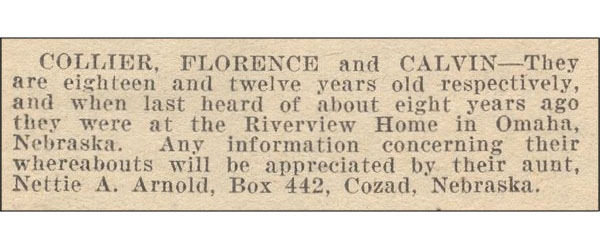
Nettie Arnold died in 1979 at the age of 88. Appears to have spent her whole life in Cozad. Her full name was NETTIE ANN GIBSON RUBOTTOM ARNOLD (I’m taking that from a genealogy site that has to shout, because many members are old). As for the Riverview Home, well:
After the police had picked up 7 year old Darwin at a downtown movie theater, he was taken to the Riverview Home detention facility. Riverview, Omaha’s worst answer for homeless youth, was famous for its “strapping room”, where tape on the floor showed children who were to be punished where to lie.
Criminey. That’s from a history of the Masonic Home for Boys, which was a step up. Thirty-three steps up, probably.

If those names in Western novels seemed too fanciful, well:
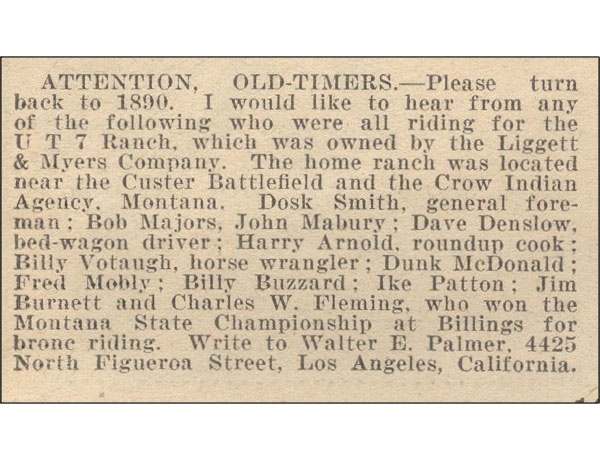
Dosk! Ike! Dunk! Buzzard! Bronco Chuck! Git over here, we got work to do. Note that the ranch was owned by Liggett & Myers - as in L&M, as in the cigarette company.

They called him Shrimp Widdicomb:
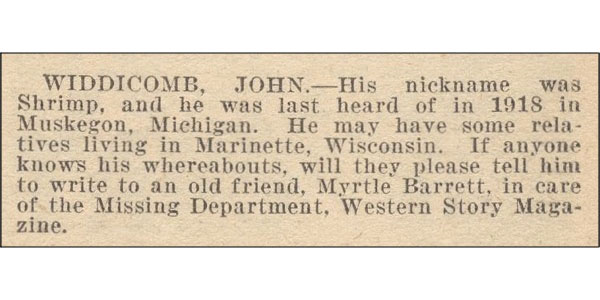
He might have left everyone behind so he didn't have to hear them call him Shrimp no more.

Hey, if this magazine finds its way to another continent and a guy I haven’t seen for 40 years ago on another continent reads it, drop me a line:
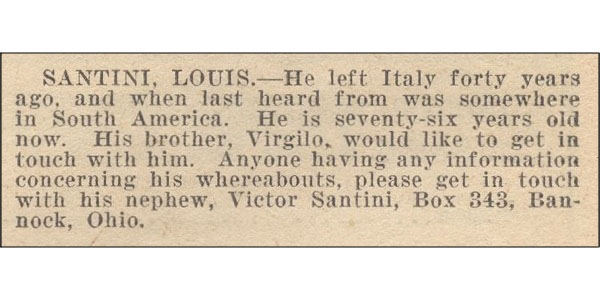
I think if you tell your brother you're "somewhere in South America" it might be for a reason. Or his brother gave him a specific address in Buenos Aires, and Virgilio lost the piece of paper. He gets angry if you bring it up. How-a the hell do I know where he is? One of those places down there. He probably moved.

Her brother sure had a lot of names, for some reason:
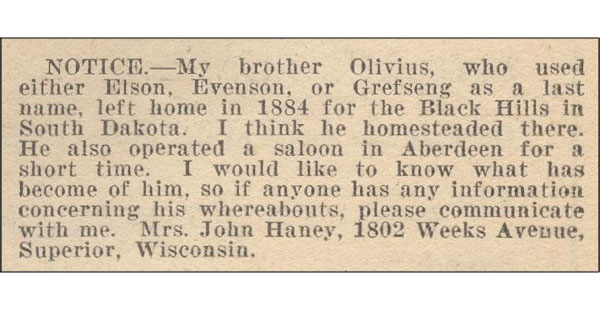
Keep in mind this is almost 50 years after he vanished in the Black Hills. In those days it seems unlikely that the memory of one’s existence would persist for half a century in the Badlands, unless you'd killed a lot of men but set enough free to enjoy a roguish reputation.

Sometimes a man wants a job where he’s out there with the horses and no one else. No one to look at him funny. No kids to point an’ laugh.
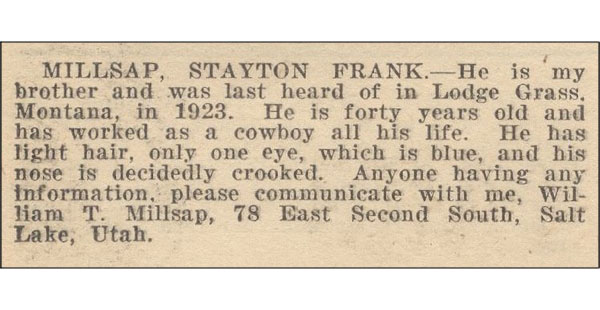
Well, I knew a guy about that age, a cowboy, sure, light hair, busted up sniffer, and one eye . . . but can't rightly say it was blue, and she must have mentioned that for a point. No point in writin' her, I reckon.
More tomorrow.

This week in Nonstop Pumpkinization ofThings, Traders Joe edition, we have:

In every bite? Not if you twist them into two portions so cleanly one side has no frosting. Hey, you say, it's filling. Well, it's filling when it's between two crackers, but once it lacks any enclosure, it's frosting.


Some towns try just enough so you wish them well. Others seem resigned. What will the verdict be for . . .

I've no idea how I found my way here, but I'm glad I did. It's full of ghosts and not all of them are screaming. Although this one . . .

Look at the top. There's something ornate behind the screen, or was, once; they had to paint everything to match the modernization, but still gave blue details to the peculiar ornamentation up above.
Sometimes the buildings look like Google Street View glitches all on their own.

Second floor showroom windows, I'm guessing. Covered up when? and why?
Below: Nothing unusual here, except. . . well, the name. Made me wonder.

A high school student wrote a nice account of its service to the community, but what's the origin of the name? A hat-tip to the Columbian Fever that swept the land in 1893? No: the page says one of the original tenants occupied some space in 1890.
--
A fine Roman building, even if the temple portion appears to be jacked up out of the reach of the plebes.

As you know, every one of these entries requries a bank.

We didn't waste money on any fancy column capitols. Good old Doric is fine for us. We're a plain people. An honest lot. None of that big-city Corinthian. You see a Corinithian order, you know they're charging hidden fees.
--
I'm going out on a limb and say the ground floor was filled in years after the original construction, and not by someone with a great deal of aesthetic skill. So why did I chose it?

Again, the name. It says BLUMENTHAL & CO, and that has to mean Department store. Sure enough. The original store was destroyed by fire in 1926, and they built this one to replace it. The store foundered in the Depression, and became a Penney's.
Now, according to the town's wiki, it has a crisis pregnancy center. Again, I believe that this is a high school paper.
Webster defines success as the achievement of something desired, planned or attempted, and although to many success is not a word that could truly define the building’s current occupant, this definition clearly shows that in its own way, the Crisis Pregnancy Center is as successful as any other business.
And my daughter wondered why I struck that out of a paper she did.
Down the street, a marvelous urban intersection:

Makes you want to lean against the lamppost and think about the case you're working on. The overhang on the right is a lucky survivor. The tall building is the Marion National Bank:

Construction began in 1916. We go again to the town's wiki, and another high school paper: "After the death of the founder Jason Willson on March 10, 1913, the bank never felt the same for a period of time." And: "Another major event caused problems for the bank. The day before the bank opened its doors on October 20, 1916, the United States entered World War I, the War to End All Wars. America, of course, won the war, but it caused a recession in the United States and at Marion National Bank. People had major financial problems due to the effects of the War."
Would have loved to see the teacher's margin notes. Oh, and there's this:
The bank also remodeled its main building downtown in 1974. The beautiful murals were then painted over to keep them from deterioration.
That's one way to save them, I suppose, if "saving them" isn't the actual objective.
Another old retail space reconfigured for retail of ol things:

Looks as if it suffered a flesh-eating disease.
Two ways to redo an ancient storefront, below. An old matron cruelly rouged:

Fie to the disunited, fragmented world of telephonic communications; join me, my brothers in the new age of United Telephones:

The ground floor hasn't been ruined too much; looks like the original awning. But was the building next door a bar for hobbits?
The newspaper. Modern. You know what the grey stuff feels like. Sharp rocks.

When you can't afford to take down the sign, just paint over it. Won't make anyone think "Undertaker" or "Goth Emporium" or "What used to be there?" No, it's perfectly normal.

Thanks, Andy:

The Carnegie library. And across the street, a picture that could have come from 1958. Except for the car.

Compare and contrast with the Golden Age of Post-War Civic Architecture:

Scuttle in, citizens, and get your meal card.
There's more: why not discover it for yourself? Give my regards to Marion.

View Larger Map


Work blog around 12:30, maybe - big column & interview day tomorrow. Tumblr around noonish or so - see you then!

|